Lyme Regis sits at the heart of the Jurassic Coast, a 95 mile stretch of coastline declared a UNESCO World Heritage site in 2001 for its remarkably rich geology.
The fossils at Lyme Reigs have been formed from rocks between 65 and 250 million years ago. Pioneering paleontologist and fossil collector Mary Anning collected fossils here in the early 19th century, making some of the most important discoveries of the age. Today’s fossil hunters follow in her footsteps, scouring the beaches, particularly after stormy weather which often leads to erosion and mudslides which expose the ancient rocks and fossils.
Fossil hunting is a very interesting activity to do whilst in Lyme Regis and will provide hours of entertainment! All of the below sites are within a 15 minute walk of one another and a short stroll form our properties.
Lyme Regis was the home of famed palaeontologist and fossil collector Mary Anning. It makes it the perfect place to learn a little more about the fossils of the Jurassic Coast – and even hunt for some yourself, you may find a few ammonites!
With the regular landslides from the ever-shifting cliffs, there are often treasures to be found amongst the gravel and shingle! You can even take a fossil hunting tour, such as the ones run Lyme Regis Museum which are a great trip out (especially with the kids).
Black Ven, located between Lyme Regis and Charmouth, is Europe’s largest coastal landslide with regular cliff falls and large mudslides revealing new fossils. To the west of Lyme Regis is Monmouth Beach with its spectacular ammonite pavement.
The beach is approximately a 15 minute walk driectly from a car park that sits above the landmark. The walk is across a steep path and steps down onto the beach, so you’ll definitely need appropriate footwear for the trip! But the views and setting are incredible, and well worth it.
When going onto the beach always check the tide times. The best time to go is when the tide is going out.
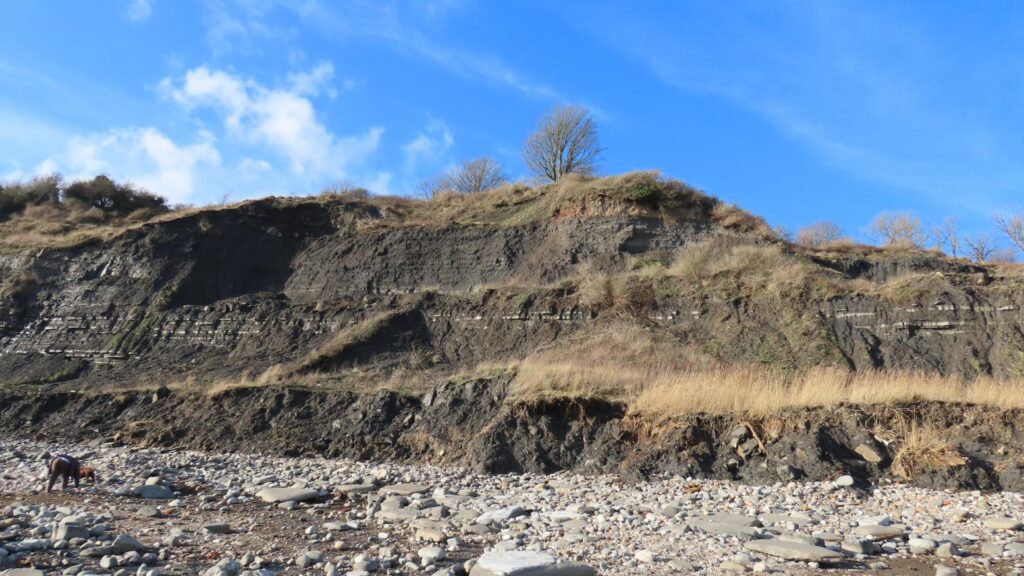
Photo credit: Love Lyme Regis
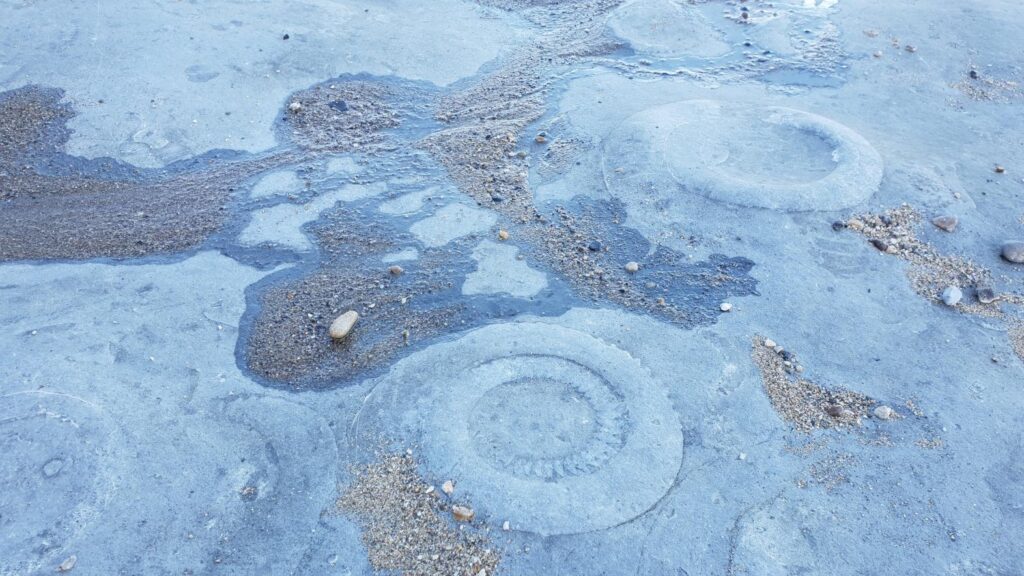
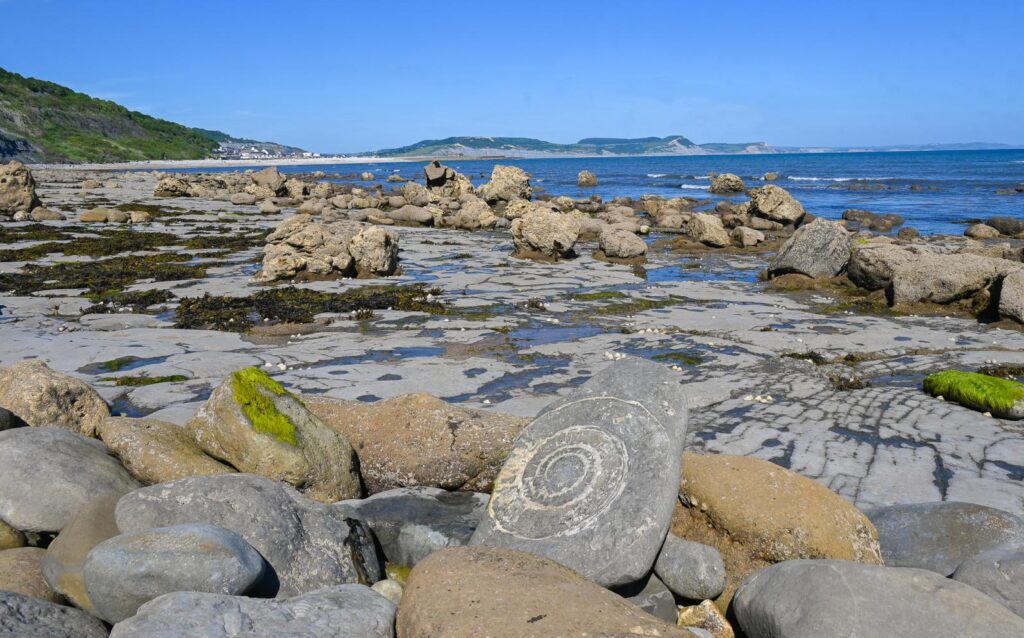
Photo credit: Love Lyme Regis
At the western end of Monmouth Beach in Lyme Regis heading towards Seven Rock Point and Pinhay Bay, you’ll find a spectacular graveyard of fossils known as the Ammonite Pavement. Here the remains of thousands of ammonites, an extinct group of marine molluscs, are embedded in the limestone ledge. The rocks record a time 199 million years ago, when marine ecosystems were returning to normal after the Late Triassic period mass extinction. The main species is the dinner plate-sized ammonite, Coroniceras. Most of the ammonites have a well-preserved outer coil and a crushed middle. Some of the remains stand proud of the limestone where the softer rock has been eroded away.
The ledge is exposed at low tide and extends from the base of the cliffs. Many of the surrounding boulders contain large fossil ammonites.
According to the Natural History Museum, the fossil ledge is the only one of its kind in the world – nowhere else features so many big ammonites, which are up to 70 centimetres in diameter.
The only way to access the Ammonite Pavement is to walk along Monmouth beach at low tide in a westerly direction and you will come across the limestone ledge. There is no access from Ware Cliff, despite what Google maps may say!
A small pebble and sand mixed beach at the front of the Marine Theatre. Church Cliff Beach is to the east of the town and is a relatively secluded beach accessed by steps.
Whilst the beach is covered at high tide, at low tide hundreds of
rock pools can be found along the beach, along with an extensive rock ledge for further exploration. Dogs are also allowed on the beach at any point of the year.
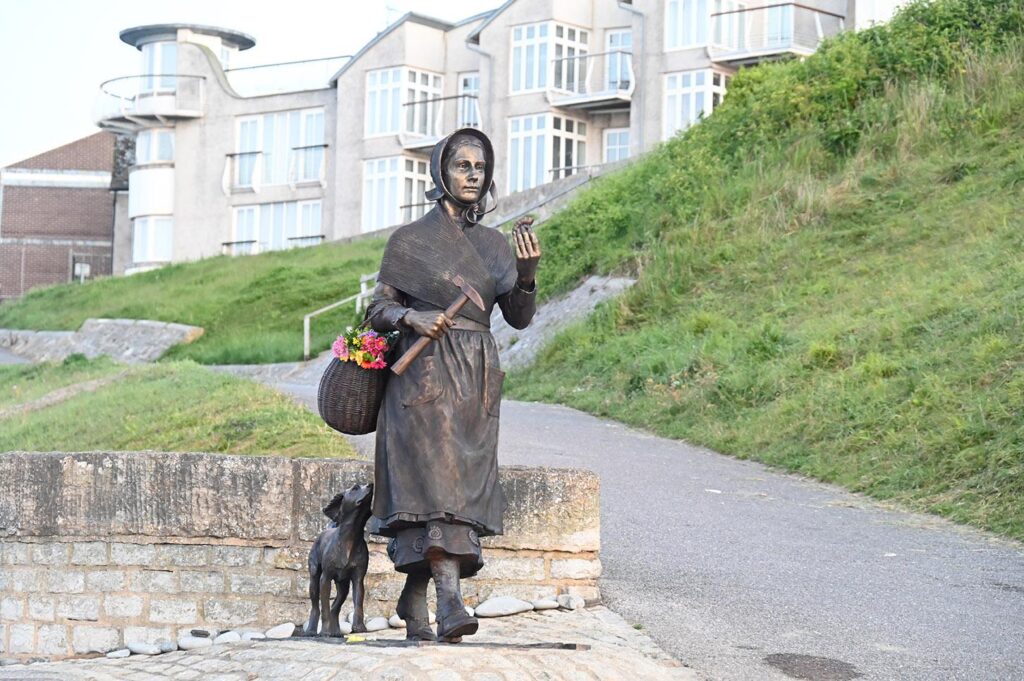
Photo credit: Love Lyme Regis
East Cliff Beach, is the furthest east and extends towards Charmouth. Church Cliff Walk, along the top of the sea wall, provides access to the beach and you can reach the sea wall by walking along the seafront from the town in an easterly direction or descend just over 100 steps from Charmouth Road car park.
This section of beach is bursting with fossils and with a bit of knowledge and luck you can discover your own. Fossils can be found washed out of the cliffs loose on the beach in the gravel and shingle. You can collect what falls loose on to the beach, but not dig into the cliffs.
The cliffs around this area are the remains of a Jurassic seafloor that was teeming with life 180 million years ago. As these cliffs collapse into the sea and the waves break against them, fossils are exposed on the beach with the most recognisable being the spiral shaped ammonites. This section of the Jurassic Coast is one of the most active landslip sites in Europe, so avoid getting too near the cliffs. Even at a distance you can hear the blue lias rock ticking and clicking, preparing to collapse again.
There are lots of organised trips where you can learn the best tips and techniques for finding fossils whilst staying safe. The best time to go fossil hunting is just after a big storm as the cliffs are naturally eroded with fresh fossils exposed. The beach is cut off at high tide so always check the tide times before venturing out.
Dogs are allowed on this beach, off the lead, at any time of the year.
A must see on your visit to Lyme Regis! A statue of the pioneering 19th-century fossil hunter and palaeontologist Mary Anning was unveiled in her home town of Lyme Regis on what would have been her 222nd birthday. A monument worthy of this monumental woman was revealed on Saturday 21 May 2022 by Professor Alice Roberts. The installation of the statue marked the culmination of a four year campaign by the Mary Anning Rocks group. The statue is situated at the junction between Long Entry and Gun Cliff Walk.
Campaign group Mary Anning Rocks was formed, raising more than £100,000 for a bronze statue which was created by Stoke-on-Trent-based sculptor Denise Dutton. The campaign for a statue had the backing of by Prof Alice Roberts, who appeared in a promotional video commenting “I think it’s so important that we recognise people like Mary Anning and celebrate them, it’s about restoring her to her rightful place in the history of science. It’s about making sure that anyone who visits Lyme Regis knows that this really important woman was there doing that work in the early days of palaeontology.”
Mary Anning was born in Lyme Regis in 1799 and went on to become a pioneering palaeontologist. Anning’s discoveries in the early 19th Century helped shape scientific understanding of prehistoric life, but her work was never properly recognised.
Anning, whose life inspired feature film Ammonite, was widely snubbed by the scientific community and never fully credited for her discoveries because she was a working-class woman with little formal education.
The organisation is continuing to raise the money to create Mary’s Learning Legacy, a sustainable educational program that will live on after the statue is built and help the next generation of Earth scientists to follow in Mary’s footsteps.
You can donate to the Crowdfunding campaign at https://www.maryanningrocks.co.uk/pledge
Fossil Walks are a great way to learn more about the geology of the Jurassic Coast and to hear about the amazing fossils discovered here in Lyme Regis.
Join expert guides to go fossil hunting on Lyme’s famous East beach and Black Ven. Learn all about the remarkable fossil hunter Mary Anning, the geology of the Jurassic Coast and discover your own fossils to take home.
Walks last between 2.5-3hrs. A reminder to wear sensible footwear and come dressed for the weather on the day. More information and booking your fossil walks can be found on the Lyme Regis Museum’s website.
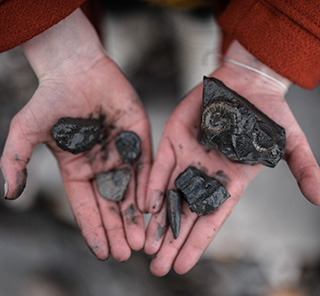
Photo credit: Lyme Regis Museum
The Lyme Regis Museum is located on Bridge Street, and described by Sir David Attenborough as “A remarkable museum, a gem”.
Built on the site of Mary Anning’s home, Lyme Regis Museum stands in the heart of the town, just where the beautiful coastlines of Dorset and Devon meet on the Jurassic Coast World Heritage Site. The sea views from the museum’s new Mary Anning Wing are stunning, and the extra space has provided all the facilities you’d expect in a modern museum, including the purpose-built Fine Foundation Learning Centre – the perfect space for families and schools.
The building has great idiosyncratic charm. Built in 1902, it was commissioned by Thomas Philpot, a relative of fossil hunter Elizabeth Philpot who had worked with Mary Anning. The architect was George Vialls, who also designed the Town Hall next door.
The museum is packed with interesting and thought-provoking displays. The collections are unusually rich for a small museum and the team have a lot of good stories to tell. Lyme’s lively local history is well represented by its spectacular fossil collections, maritime and domestic objects, and illustrated by paintings, prints and photographs. The area is noted for its fossils, displayed in our geological galleries, and the town’s literary connections, from Jane Austen and John Fowles to Tracy Chevalier, are illustrated in the Writers’ Gallery.
The Museum holds a number of different events which provide adults and children hours of entertainment, from guide fossil walks, exhibitions, family actvities and education workshops. Visit their webstie to arrange tours and book your visit.
Before or after one of your days fossil hunting, how about a visit to what is a brilliant musuem, The Dinosaurland Fossil Museum.
It caters for all, aimed at children from 5 to adults at 85, with an interest in fossils and dinosaurs. It houses a spectacular collection of the local Jurassic marine fossils and explains what they are, why they are there and what they mean.
The Map room introduces you to why Lyme Regis is so good for fossils and shows you where to go to find your own fossils. The Fossil Collection consists of a spectacular collection of the local Jurassic marine fossils ranging from the tiniest microfossil to the largest Ichthyosaur and most things in between. There is a large collection of Ichthyosaurs with highlights being the Diving Ichthyosaur and the Langdon Ichthyosaur which is expected to be the largest Ichthyosaur to be discovered in Lyme Regis.
There are hundreds of ammonites of all different shapes and sizes. Of particular interest are the Nautilus specimens that were home for families of ammonites. You can explore the Belemnite collection and see how there is enormous variety of these fossils in Lyme.
They have also included exotic additions from around the world to make special points. The Holzmaden Crinoid is a fossil of unbelievable beauty for comparison with the Lyme crinoids. Additionally, there is a collection of Chinese dinosaurs, a range of Dinosaur eggs and a 73 kg lump of dinosaur dung! The Russian trilobite collection is just sheer indulgence.
Something that will provide a memorable experience to your visit to Lyme Regis, this museum is located on Coombe Street, very close to our properties Coombe Cottage and The Bothy.